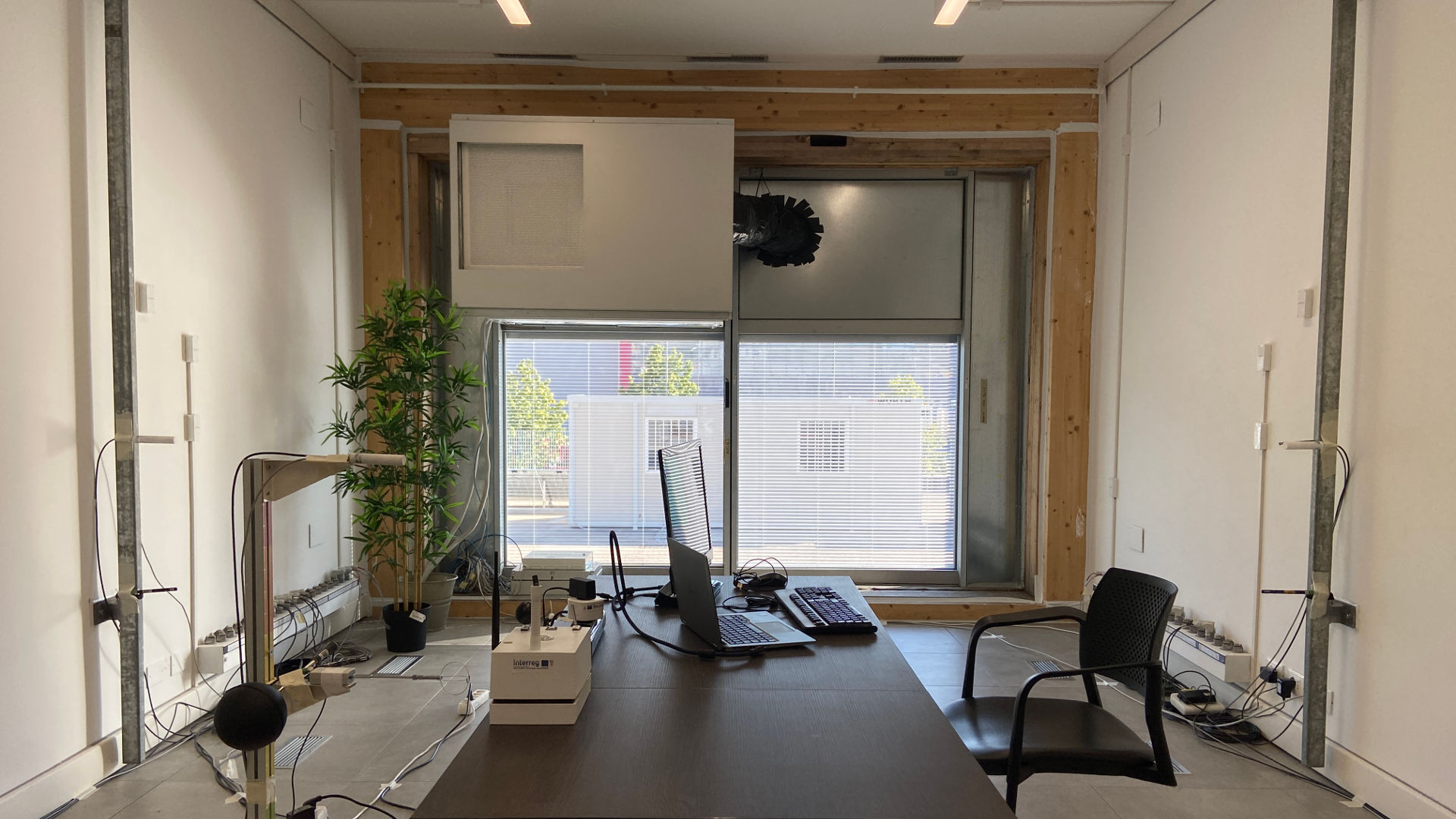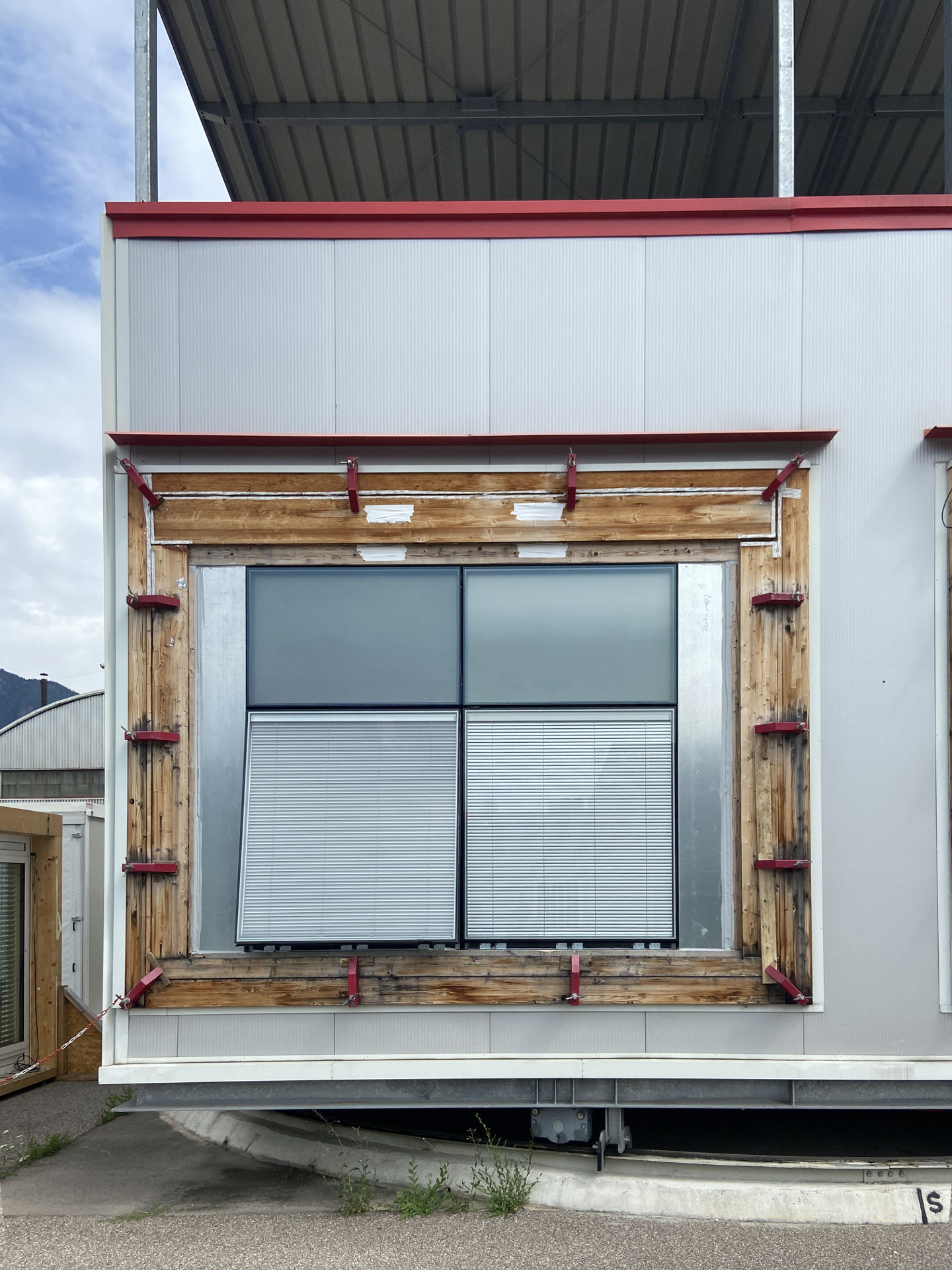Multifunctional Active Façade: Impact on Occupant IEQ Perception and Comfort
- Home
- Success Stories
- Multifunctional Active Façade: Impact on Occupant IEQ Perception and Comfort


The tested solution is an innovative multifunctional façade system integrating IoT, heat pumps, automatic blinds and windows to ensure indoor comfort and energy efficiency.
The scope of the PM&VL2 is a complete characterization of all the envelope parts and their effects on internal occupants in real operating conditions. The Façade System Interactions Lab (FSIL) aims to assess the interaction between the elements that make up a building and the indoor environmental quality and comfort conditions.
Main author:
Akshit Gupta
EURAC Research
The experiment involved assessing the façade in summer conditions within an office setting. The primary goal was to examine how the façade influences the quality of the indoor environment. The participants could engage with the façade web application, as it autonomously establishes the indoor conditions.

Results from the questionnaires administered by the participants:

As compared to the beginning of the test, after interacting with the façade, participants judging their thermal state as close to thermal neutrality increased by 18 percentage points.
The participants reported to be “slightly annoyed” by the acoustic environment, indicated their preference for a “quieter” or even “much quieter” acoustic environment.

The preference judgement indicated that the frequency of “More natural lighting” was higher than the other categories, even though a slight decrease was observed at the end of the experiment, after the participants had the possibility to interact with the façade by giving a judgment on the illuminance of the room.
When asked what changes should be done to improve the indoor environment, the participants indicted clearly the necessity to improve the acoustic environment (i.e., reduce the noise emitted by the ventilation system) and the lighting (i.e., increase the amount of natural lighting from the windows).
The experiment assessed the summer performance of the façade system in an office setup, focusing on its influence on indoor environmental quality. Using a web application, participants engaged with the façade’s automatic regulation of the indoor environment. In addition to objective data, feedback from 39 participants on thermal comfort, air quality, ventilation, lighting, acoustics, and overall perception was collected through questionnaires administered at the beginning and end of the test. The findings offer insights for future improvements and optimizations of the façade’s functionality.
Multi comfort with good indoor air quality
01 September, 2024